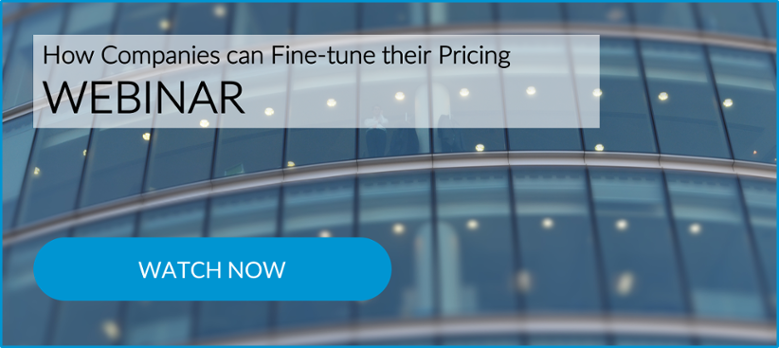Introduction
Whether you're selling a product or service, at some point you will have to put a price on what you're selling. It isn't always easy or obvious to price something and it's where a lot of ecommerce business owners simply stick a pin on a number and hope for the best.
However, there really needs to be a little more thought involved in the process because in the world of ecommerce sales, appreciating how to strategically price products and run successful promotions is a major key to success. For more on the best tips in ecommerce, check out this guide to IRCE 2018.
Psychological Pricing Tips
We know that consumers have an innate inclination to respond to certain types of prices and this is what we call psychological pricing - it's a strategic way to price your products or services in order to influence/persuade people when making their purchase decisions. If you want to get your customers to buy more from you, here are 5 tips to do just that:
1. Offer something for free
"Free" is a very emotive word and does the job of enticing customers to buy, even if they weren't intending to buy anything in the first place. The idea is to grab your customer's attention by offering, for instance, buy one get one free. We all know that in reality there's no such thing as a free lunch but there's proof out there that BOGOF offers really impact on the buying behaviour of customers.
You could also offer free delivery - Amazon does this to excellent effect with Amazon Prime. Your customers know that they are not going to get a nasty shock at the checkout and feel motivated to carry on with the purchase.
Consumers prefer to get more for the same price than to get a discount on the product, which is is why you often see “33% more” on the containers of cleaning and food products. Psychologically, the 33% more for free sounds better than a 33% discount off the product's price.
2. "Charming" Number 9
Many studies have shown (pretty obviously) that in general consumers prefer to pay less for products and often associate prices ending in a nine with discounts and bargains.
Today it seems like almost every online price ends with a .49 or 99. This is what psychologists call the “
For example, an item that you price at £49.99 psychologically means £49.00 to a customer instead of climbing to the "next level" £50.00 price range. The idea that the price isn't a round number tends to suggest that the item is on sale even when it's not. By ending your pricing with a 9, you are appealing to shoppers who might not even be looking for a discount.
This is the reason why companies like Apple will price a laptop at $1299.99 and not $1300. That $0.01 actually makes a surprising positive difference to
Apple uses this strategy across the entirety of their product lines. Apple rarely (if ever) offer discounts on their products and the use of this strategy is the only attempt they make to make their products seem more reasonably priced. Take a leaf out of Apple's very successful book with your ecommerce sales.
3. Use Odd Pricing
Odd pricing is the pound prices that you don’t see too often and end with 5, 7, 8 or 9. This type of pricing makes it seem like you the retailer carefully calculated the price of the product. Using this pricing makes customers think that the price was a deliberate strategy to offer a fair price for the customer and the retailer, marking the product down to the lowest possible price.
Prices such as £9.95, £9.97, £9.98 and £9.99 are used instead of making the price £10. This technique works when discounting products as well, slashing a price from £49 down to £38 is much more effective than £49 down to £40.
Try using odd pricing on a new product you’re launching. Consider using two different price points, one with odd pricing and another with around price to test which one works best for you. More often than not it's the former.
4. Try Comparison Pricing
This is a clever marketing technique in which the price of one offer is directly contrasted with the price of another offer. Another word for this is "anchoring", which refers to the tendency of customers to rely heavily on the first piece of information offered and subsequently weighing their purchasing decision based on this.
In a study published in The Wall Street Journal, we learn that Williams-Sonoma had a $275
When you’re launching a new product or service, consider utilising comparison or anchored pricing. Create a tiered product strategy because your customers don’t make decisions in a vacuum and pricing your product(s) in this way takes advantage of that fact. In the Williams-Sonoma example, consumers may have thought, "if I can buy the $275 model that's almost as good as the $415 model, then I must be getting a good deal."
Position your product collections with comparison pricing in mind. Try to introduce a more “premium” version of your product and see if your "normal" product sells more.
5. A "Premium" Price Always Means A Quality Product
A few years back you might have thought your friends and family were mad to pay so much for the latest Apple technology – their products were so much more expensive than similar products. Perhaps your opinion has now changed and you have realised that when you are paying a higher price for something you appreciate it more?
After all, if it were not extraordinarily superior they wouldn’t charge so much for it, would they?
Consumers equate price with quality and this pricing strategy can be applied to almost any business. If you are selling a T-shirt for £100 it might sell just as much as one that’s the exact same selling for £20. Give it a try.
In your customers' minds, expensive = good.
Test Out Different Pricing
So, I've given you here a few psychological pricing ideas and perhaps you believe it would be a good idea to implement one or more into your ecommerce sales. Remember to test out different pricing for new or current products that you’re selling and bear in mind that your customers' purchase behaviours may change over time.
Related Posts
12 Psychological Pricing Techniques
Sock it to them with Psychological Pricing
Major Things to Consider When Changing Your Pricing Strategy
8 Discounting Strategies for Ecommerce Companies
Sources
https://www.prestashop.com/en/blog/the-psychology-of-pricing-and-discounts-for-e-commerce
https://www.shopify.com/blog/26445508-psychological-pricing-is-your-golden-ticket-to-selling-more
http://smallbusiness.chron.com/psychological-pricing-11862.html
https://hbr.org/2002/09/pricing-and-the-psychology-of-consumption
The Strategy and Tactics of Pricing, Tom Nagle and John Hogan, 2016
Pricing for Profit: how to develop a powerful pricing strategy for your business, Peter Hill, 2013
Pricing Strategy: how to price a product, Bill McFarlane, 2012
The Psychology of Price: how to use price to increase demand, profit and customer satisfaction, Leigh Caldwell 2012.




